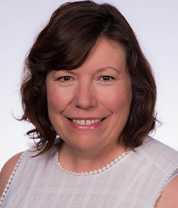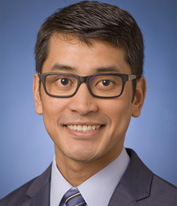by Misty Stutz, PharmD and Vinh Nguyen, PharmD
“The student is on an experiential rotation…so the Office of Experiential Education (OEE) should handle that.” It’s difficult to count the number of times an issue has been forwarded to the OEE just because the student is located outside the walls of the classroom.
At our institution, EE is responsible for:
- Development of course syllabi and assessments
- Recruitment and development of sites and preceptors
- Resolution of student, preceptor, and site issues
- Maintaining budget and contracts
Sullivan is an accelerated three-year program, but like other institutions, a majority of our curriculum falls on just a handful of faculty and staff who make up our EE department. Historically, the average size of full-time faculty devoted to EE is just three to four people1,2 and our office is no exception. We currently have 2 full-time pharmacists and 2 staff (1 full and 1 part-time) to manage experiential rotations that comprise more than one-third of our curriculum.
Efficiency is critical to maintaining our office. Here are some tricks we used to optimize existing resources.
Office of Student Affairs
Student issues, either academic or professional, can appear at any time while a student is enrolled at a College of Pharmacy. Previously at our institution, a siloed point-of-view was often exhibited by faculty regarding experiential issues with students who left the walls of the classroom. Regardless of where the learning takes place, the Office of Student Affairs is better equipped to handle student issues. EE can aid in the mediation process between preceptors and students; however permitting the Office of Student Affairs to handle student issues optimizes resources and allows for a consistent (which is crucial!) and more holistic approach to dealing with issues. It also allows for incorporation of historical data to be utilized when dealing with students with past academic and professionalism issues; information that the EE office does not always have access to. Additionally, the Office of Student Affairs has a platform for continued engagement with the students even while on experiential rotations, something with which many pharmacy programs have struggled.1
Residency Preceptor Development
Our College partners with several local institutions in the area to help provide residency positions. This close partnership allows our coordinator of residency programs to maintain a strong standing relationship with the residency preceptors and staff members at these institutions. We utilized this heavy involvement to leverage our current residency preceptor development model to include the development of preceptors for students.
Faculty Extenders
The development of this piece plays a crucial role in optimizing the EE workload. Instead of referring preceptors to OEE for questions, we have encouraged and provided the faculty practitioners the resources needed to triage questions and provide preceptor development at their site.3 We feel that the best source of information for non-faculty preceptors are from those faculty members that practice alongside them at the site.
This was especially helpful with our institutional introductory pharmacy practice experiences (IPPEs). Our faculty practitioners do not have direct oversight for students on IPPEs. However this past year, with having faculty as extenders, the number of questions and issues that arose were greatly limited. We recorded fewer issues at sites with faculty liaisons this year even though we increased the number of students per site[DM3] .
Lessons Learned
The colloquial adage, “An ounce of prevention is worth a pound of cure,” should be heeded when implementing these changes. In order to be successful, make sure your framework is solid.
- Upper administration must support your efforts. Be sure the department chair and or Dean is behind your efforts and recognizes this as part of the faculty workload.
- Faculty must recognize the benefit and be motivated to support OEE.
- Faculty must receive ongoing training (not one and done) as the world of experiential education is continually evolving.
- Faculty extenders don’t replace OEE, but rather support OEE. OEE still needs to be the leader of quality assurance efforts, but utilizing faculty expertise can be beneficial and will promote best practices of a unified team.
Thoughts
We all know there is no one right way to run OEE, but we must evaluate our practices on an ongoing basis. What do you do at your institution to increase efficiency? What could you be doing?
References
- Danielson J, Craddick K, Eccles D, Kwasnik A, O’Sullivan T. A Qualitative Analysis of Common Concerns about Challenges Facing Pharmacy Experiential Education Programs. Am J Pharm Educ. 2015;79(1): Article 6.
- 2014 EE Leadership Membership List. American Associations of Colleges of Pharmacy. http://www.aacp.org/. Published: 2014; Accessed August 4, 2017.
- Elizabeth McCullough, B.S. et.al. Team Development of the Experiential Program Office and Beyond. AACP Experiential Education Newsletter. Spring 2015: V2, I2.
Author Bios:

Misty Stutz serves as the Chair of the Clinical and Administrative Science Department at Sullivan University College of Pharmacy. Her educational scholarship interests include self-care, medication therapy management, and community outreach. In her free time, Misty enjoys hiking and cooking.

Vinh Nguyen serves as the Director of Experiential Education at Sullivan University College of Pharmacy. His educational scholarship interests include pharmacogenomics, clinical decision support, and personalized medicine. In his free time, Vinh enjoys playing golf, perfecting the best BBQ ribs recipe, and fixing up his new house.
Pulses is a scholarly blog supported by a team of pharmacy education scholars.
